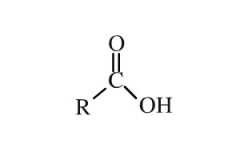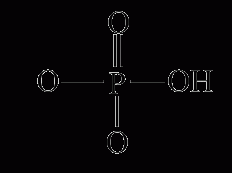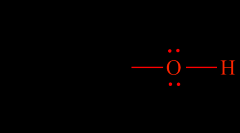![]()
![]()
![]()
Use LEFT and RIGHT arrow keys to navigate between flashcards;
Use UP and DOWN arrow keys to flip the card;
H to show hint;
A reads text to speech;
43 Cards in this Set
- Front
- Back
|
Point Mutation |
"substitution" mutation; made up of: Silent mutation, Missense mutation, and Nonsense mutation |
|
|
Frameshift Mutation |
A mutation due to an insertion or deletion (add a base or take one away --> changes everything after it) |
|
|
Mutation with a premature stop codon |
Nonsense Mutation |
|
|
Mutation with a base change, but same amino acid sequence |
Silent Mutation: changing a base but it doesn't make a difference; usually happens when you change the last letter |
|
|
Mutation with a base change and a different amino acid sequence |
Missense Mutation: changing a base and having the change actually make a difference |
|
|
We are testing the effect of water on plant growth. What is the independent variable?
|
Water. The water doesn't change and is INDEPENDENT of the plant growth. |
|
|
We are testing the effect of water on plant growth. What is the dependent variable? |
Plant growth. The growth is DEPENDENT on the water. |
|
|
What is the importance of a control group? |
Control groups allow for a point of comparison. You can see if there really was a significant difference by comparing the experimented variable to the original. |
|
|
What are the building blocks and functions of carbohydrates? |
Carbohydrates are built from sugars. They serve to give energy because when you break down a carbohydrate, you get ATP. |
|
|
What are the building blocks and functions of proteins? |
Proteins are built from amino acids. They help make the cell membrane, enzymes, muscles, and hormones. |
|
|
What are the building blocks and functions of lipids? |
Lipids are built from fatty acids and glycerol. They are hydrophobic and they store energy. |
|
|
What are the building blocks and functions of nucleic acids? |
Nucleic acids are the building blocks of DNA and RNA. They're made from sugars and phosphates which bond to each other to create that DNA and RNA. |
|
|
What's so great about water? (Scientifically) |
Water is a great solvent because it's polar. There is a slightly negative charge due to the oxygen sharing its electrons with the two hydrogens. The polarity and hydrogen bonds makes it sticky to itself. |
|
|
What's so great about carbon? |
-All organisms are made up of organic, carbon-based molecules -forms four strong, stable covalent bonds -allows for many different shapes |
|
|
What are the building blocks of DNA? Explain DNA! |
Nucleotides are the building blocks of DNA. Phosphates and sugars bond together and make strands, then the bases Adenine and Thymine bond together and Cystine and Guanine bond together. The hydrogen bonds are what connects the two strands together: making a double helical structure. |
|
|
What is an organic compound? |
An organic compound must have a carbon backbone. |
|
|
Translate this DNA sequence to an mRNA sequence: TTG AGG TGG ACG. |
AAC UCC ACC UGC |
|
|
Why are some mice dark and some mice light? |
There were multiple missense mutations leading to the mice being different colored. Then, the different colored mice would be in different areas and either flourish or die out in that specific area. The light mice survived in the light areas because they could camouflage so they survived and reproduced, whereas it was the opposite for the dark mice, who survived in the dark colored land and died out in the sand-colored land. Survival of the fittest! Adaptation! |
|
|
Explain the DNA-wheat germ extraction in class experiment. |
You mix wheat germ, water, detergent, and then isopropyl alcohol which separates from the water as the water is polar and the alcohol is non-polar. The soap punches holes in the lipids and opens up the cell membrane and then the goo/DNA emerges slowly from the bottom and you can see it floating at the top with the alcohol. |
|
|
What is a gene? |
A gene is made up of DNA and it makes proteins. Each person has 2 copies of a gene (one from each parent) like the mitochondrial DNA is from the mom. |
|
|
What are the two steps in protein synthesis? |
It's made up of transcription and translation. |
|
|
Explain the Avery experiment. |
S (Smooth) and R (Rough) bacteria were injected into mice. The S is infectious and the R is not. The mice with the S strain injected into them died and the mice injected with R survived. When he killed the bacteria in the S and injected the mice, the mice were fine. But when the dead S and the live R were injected into the mice, the mice died and live S could be extracted from the blood of the mice. A "principle" was transferred from the dead S to the R strain and it transformed the R into the infective S. |
|
|
What is transcription? Explain. |
The first step of protein synthesis; made up of three steps. Initiation: The RNA attaches to the promoter sequence in the DNA and the DNA unzips and the RNA can access and transcribe the DNA base information. Elongation: The RNA transcribes (copies) the information in a mRNA and uses complementary base pairing (A to U instead of A to T). Termination: Then there is a stop sequence at the end of the gene and the double helix rewinds back to normal. |
|
|
What is translation? Explain. |
The second step in protein synthesis where the mRNA code is translated (decoded) into amino acids. At the end of each tRNA are 3 nucleotides (anticodon) which binds to a specific mRNA codon. The other end of the tRNA has the amino acid specified by the codons. The polypeptide is properly translated and then folds into the 3D double helical shape. |
|
|
Talk about Rosalind Franklin. |
Rosy worked at King's College as a colleague and competitor of W+C. She gave information (photo 55) that led to the model making. She thought the helical structure was inaccurate, but was very adept in crystallography so aided in the model making. |
|
|
Talk about Linus Pauling. |
Pauling was at CalTech and he came up with the alpha helix of proteins and therefore helped with the model. |
|
|
Talk about Maurice Wilkins. |
Wilkins worked with Rosy on Crystallography and ended up supporting the model. |
|
|
Talk about William Lawrence Bragg. |
Bragg was the boss at Cavendish in Cambridge. He gave W+C permission to start researching DNA. |
|
|
Talk about Jerry Donohue. |
Donohue was at Cambridge. He said that W+C were using the wrong base shapes and helped them figure out a more accurate model with the correct base pairs. |
|
|
Talk about Chargaff. |
Chargaff worked at Columbia. He made Chargaff's rule: the 1:1 ratio rule. The same amount of A bonds with the same amount of T and the same amount of C bonds with the same amount of G. --> Importance of base pairing. |
|
|
What is everything on this earth made up of? |
Matter: anything that takes up space and has mass --> made of elements --> elements made of one kind of atom |
|
|
Talk about an atom, protons, neutrons, and electrons. |
-An atom has a nucleus
-Protons: positive charged particles -Neutrons: no charge -Electrons: negative charged particles |
|
|
Talk about the atomic number. |
Atomic number is an atom's number of protons. |
|
|
What is carbon's atomic number? |
Six: Carbon has six protons
|
|
|
What is an atomic mass? |
The atomic mass is neutrons + protons. |
|
|
What is carbon's atomic mass? |
Carbon has 6 neutrons and 6 protons so 12. |
|
|
What is an isotope? |
If you change the # of neutrons, you have an isotope of that original atom. For example, carbon has many different isotopes, like one that has 8 neutrons and 6 protons, which makes its atomic mass 14. Protons are the same though (6) so it's still carbon and still has the same atomic #. |
|
|
What is a functional group? |
A functional group is a group of atoms attached to a C-H backbone and it determines the structure/function of a molecule. It's like a Swiss Army knife: you see the main part when it's closed but then you can flip it open and see all its tools and use it how you want, or switch some tools for other tools, etc. |
|
|
What are the main functional groups? |
-Hydroxyl Group
-Carboxyl Group -Amino Group -Phosphate Group |
|

What kind of group is this?
|
An Amino Group. If you see an N bonded with hydrogens, it's always an amino group. --> LOOK OUT FOR N FOR AMINO! |
|

What kind of functional group is this? |
A Carboxyl Group: If you see a C-O-H together, then it's Carboxyl. |
|

What kind of functional group is this? |
Phosphate group: Wherever you see a P is probably a phosphate group. |
|

What kind of functional group is this? |
Hydroxyl group: if you see the O and the H are being bonded together, it's a hydroxyl group. |

